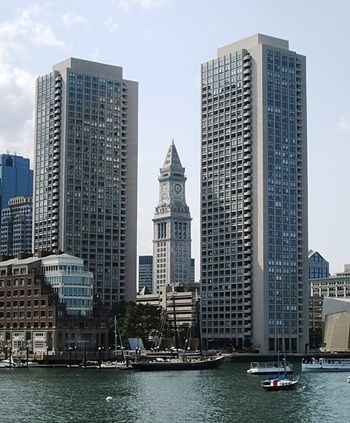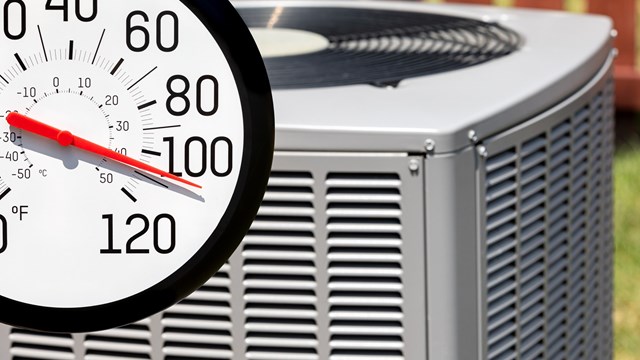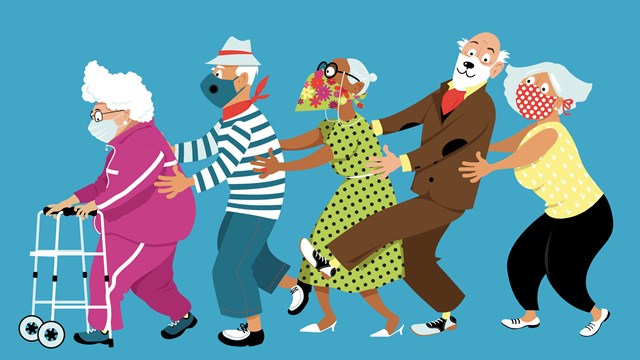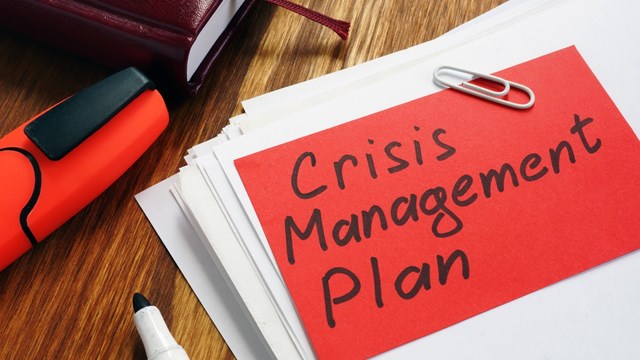
As most of the United States reaches the one-month mark under some form of stay-home directive, it has become apparent that the implications of sheltering in place are different for residents of multifamily housing than for those in single-family homes that do not share common elements. The differences are particularly pronounced in high-rise communities, where residents—as well as building staff, vendors, delivery persons, and visitors—cannot help but cross paths in hallways, elevators, lobbies, and laundry rooms. It’s not hard to see how this dynamic poses challenges when it comes to keeping as many people as safe and healthy as possible.
On one hand, even when residents are committed to practicing social distancing, the physical set-up of a high-rise building makes it almost impossible to completely isolate oneself or family from neighbors and others. On the other hand, that same physical closeness and commonality often goes hand-in-hand with a social closeness and communal mentality that can help residents and employees to hang together in challenging circumstances.
Other precautions and practices must be enacted as well -- and in condos, co-ops, and HOAs, the people charged with making those decisions is the board of directors or trustees. Property managers, boards, and neighbors alike face these challenges together; in so many inspiring cases, they find and implement solutions together as well.
The Case Study
At Harbor Towers, a condominium community of 1,200 residents in two 40-story towers on Boston’s waterfront, working together was an operating ethos well before the onset of the pandemic. According to general manager Hugh Shaffer of Barkan Management, which manages communities ranging from suburban townhomes to urban high-rises in both Massachusetts and the Washington, DC area, the community’s mixed demographics—which range from young professionals to retired residents—give it a rich bank of human capital, with varied skills and interests that can be applied directly to the function and activity of their buildings.
The community’s 624 units include access to an open communal lawn space that features expansive views of the harbor, an outdoor pool, and gas and charcoal grills, and serves as a site for resident gatherings and events, many of which are hosted by the Towers’ active social committee (at least in the BC - Before COVID - era). The scavenger hunts, sports-watching parties, summer barbeques, and concerts normally organized by the committee have moved to online events and Zoom conferences for now. The active communication committee, which had been producing a monthly newsletter about the condo’s capital projects, finances, and community events, has pivoted to COVID-related content, in conjunction with the community’s newly-formed COVID-19 committee.
It Takes a Village
Legally, the two towers that make up the Harbor Towers community are separate entities. Each has its own board of trustees consisting of five members. According to Shaffer, who has managed the association for seven years, the two boards work harmoniously, meet together frequently, and often agree on important issues.
Of course, one of those issues has been how to respond to the now-infamous virus that made itself known at the start of 2020 and has since become a global pandemic. The Harbor Towers boards were among those that took early action to address the health and safety of residents and to comply with rapidly changing professional guidance and municipal directives. Shaffer explains that at their March 10, 2020 meeting, “[The boards] decided to get ahead of the situation by forming a COVID-19 committee consisting of two trustees from each of the two towers, legal counsel, a medical professional, [Barkan VP] Maria Palmieri, a manager’s assistant, and myself.” The boards gave the nine-member committee full authority to establish protocols relating to the pandemic and to communicate those protocols to residents and owners.
The committee originally planned to send a weekly email to the community as an update to its COVID-related actions and decisions, but according to Shaffer have scaled up their efforts “given the fluidity of the situation.” They now communicate two to three times a week, based on need.
Taking Action
According to Shaffer, the trustees appointed to the COVID-19 committee were chosen because of their reputations for sound decision-making and fiduciary responsibility. The non-trustee members were selected for their particular expertise and implementation roles. “Facing a pandemic, it was important to have the ability to make decisions that are swift, actionable, and informed. The COVID-19 committee has been able to put measures and rules in place to proactively meet the evolving protocols associated with pandemic response,” Shaffer explains.
These decisions and actions have included sourcing, installing (and mandating the use of) hand sanitization at all building entrances, prohibiting the residents from congregating or exercising in any of the common areas, and halting both a hallway renovation project in one of the towers and all non-emergency work in individual units. Additionally, residents have been asked to limit elevator capacity to one person or family unit at a time, and to pick up all deliveries in the lobby. Per the committee, only house cleaners, dog walkers, and essential vendors are permitted to access residences at this time, as long as they follow posted building protocol (hand sanitizing, maintaining safe social distancing, etc.). The committee has also determined that if further measures need to be implemented—such as taking the temperature of everyone who enters the buildings, for example—they will give them due consideration.
While some of these decisions can seem drastic — or at least disruptive to residents accustomed to (and paying for) full use of their facilities and unhindered movement through their common areas — Shaffer says that the vast majority of Harbor Towers residents have been cooperative, compliant, and even complimentary of the measures taken so far. When asked how owners and residents have responded to the crisis and the actions and decisions of the committee, Shaffer says that “ninety-five percent are extremely thankful and appreciative. They compliment us on a job well done.”
A True Community
This response is indicative of the level of community and camaraderie that existed at Harbor Towers long before the pandemic. The general consensus is that life in these twin towers is congenial and practical. Residents support each other, as well as the building staff, whose jobs have become even more crucial—and at times more risky—as a result of this virus. Shaffer indicates that when the COVID-19 committee asked for resident volunteers willing to assist in a worst-case scenario (such as if maintenance or security staff were unable to come to work due to illness, shutdown, or an outbreak within one of the towers resulting in a lockdown), “They received an overwhelmingly positive response. More than 50 residents indicated their willingness to help [in such a scenario].”
The response doesn’t surprise Shaffer. He says that residents have always been very supportive of the buildings’ staff, which contributes to the sense of the towers being not just a community, but a family in many ways. They have continued to look out for and support staff members during this crisis—ordering food from local restaurants to show appreciation multiple times per week, offering free parking to staff that is normally not provided, and frequently checking in on everyone’s well being.
Since residential building staff are designated essential workers by the Massachusetts Commonwealth, they are often putting themselves and their families at risk just by traveling to and from work and performing their jobs. Nevertheless, Shaffer says he and his building and management staff are dedicated to their duties and will continue to implement the cleaning, sanitation, access limitation, distancing, and other protocols instituted by the Harbor Towers COVID-19 committee. The buildings have also hired additional cleaning staff whose sole responsibility is to clean and disinfect high-touch areas (stairway handrails, trash chutes pulls, elevator call buttons, mail rooms, and door knobs, to name a few). Managing the crisis is a true team effort, requiring all members of a residential community to step up, pitch in, and help out.
Continuing Through COVID
As we as a nation continue to hunker down—which for many also means losing or reducing employment, working from home, fighting a debilitating virus, facilitating online learning for children, finding ways to keep occupied, maintaining separation from loved ones, restricting or eliminating essential activities and services, or all of the above—it is reasonable to envision our multifamily communities becoming some communal version of Jack Torrence in The Shining. But as the Harbor Towers example shows, the disruption and tragedy of the pandemic has also revealed some of our best selves: neighbors rising to the occasion on a mass scale and even inventing opportunities for community improvement with the resources available. For Shaffer’s part, he hopes to see a continuation of the compassion and camaraderie that have always been a part of life at Harbor Towers, along with the stewardship of its competent boards and committees, and the integration and care of its heroic staff.
Darcey Gerstein is Associate Editor and a Staff Writer for New England Condominium









Leave a Comment